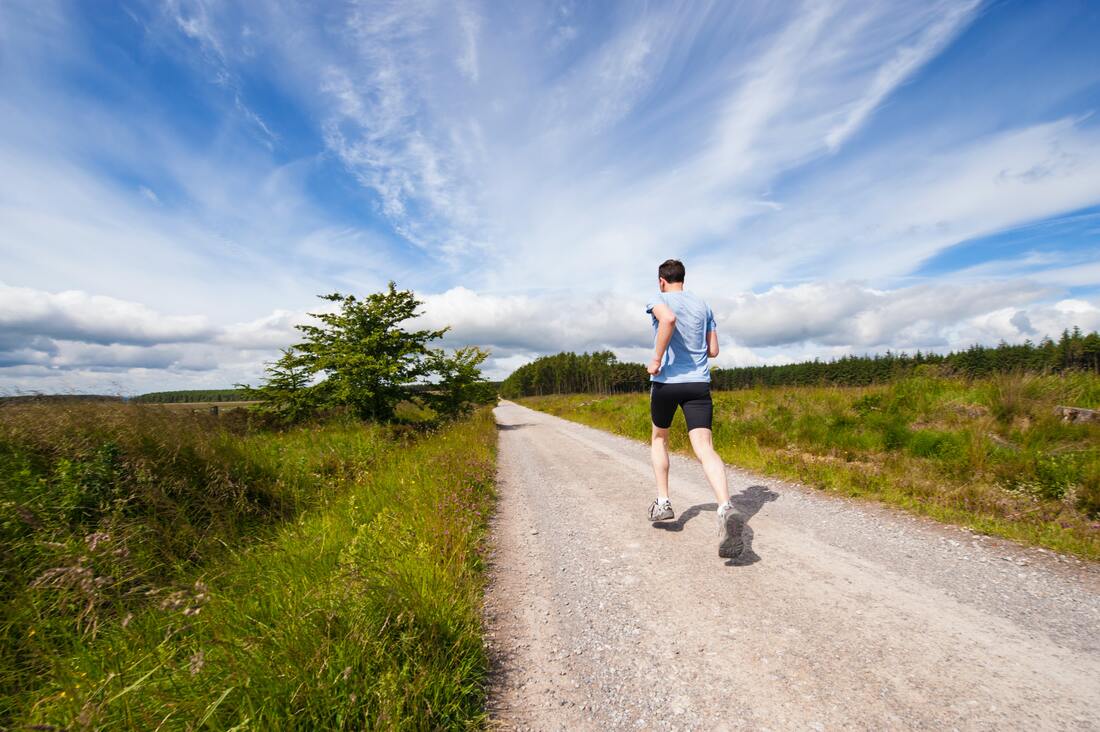|
SEARCH My Blog (Opens in new tab)
Proven to be better than yoga for a sore lower back Photo by Jenny Hill on Unsplash My hamstrings have been tightening since we've had lockdown and gyms closed. I've been running more, a lot more. Running pits the quads and hamstrings in battle, and the quads win, which tightens the hamstrings by stretching them. Typically, for runners, tight hamstrings reflect in a sore lower back. The combination of two recent research studies will help. Once tight, stretching doesn’t helpAside from runners, hamstrings are the most common muscle group which undergo adaptive shortening (tightness) across the whole population when compared with other groups of muscles. Physiotherapists see it daily, and generally more in women than men. Once tight, the answer doesn't lie in stretching your hamstrings - because they are already chronically stretched. Instead, we need to rebalance the hip muscle complex and improve muscular fluidity (or flexibility). Yoga is one a good way to do this, but there is a more effective way according to a recent comparative study. After shut-down I've relied on runningPre-COVID I went to the gym 3 times a week and finished every session with 15 minutes of stretches. Not only was I getting the benefit of the stretches, but the range of strength-bearing exercises that I was doing kept my whole muscular system in balance. That changed with COVID, as I have no equipment at home except for a foam roller, a medicine ball, and (last week) a single 12kg kettlebell. I relied on running every day and specifically warming up and warming down (stretches) for running. I was shocked last week when I tried my gym stretch sequence and found that I'd tightened up quite noticeably, particularly my hamstrings. Here is what I am now doing daily to loosen them You can test your own hamstring flexibility (below). Sit on the floor with one knee bent up, foot on the floor, and the other leg straight out in front of you. Hold onto the bent knee and reach down toward the foot of your straight leg. If you can't touch your toes while keeping your knee straight, chances are you have tight hamstrings - Stretching Exercise Guide.com Yoga good but not found to be the bestYoga sequences such as Surya Namaskar (Salute to the Sun or Sun Salutation) work for well for hip mobility and core strength. However, a recent (2020) comparative study found that "typical western" exercises were more effective in relieving hamstring tightness. Quote: The findings of this study revealed a significant improvement of hamstring tightness in both the groups [Group A: core stablisation versus Group B: Surya Namaskar] post-intervention. When the mean difference of both the groups were compared, group A showed more significant result than group B. Conclusion: Core stabilisation exercises show greater result than Surya Namaskar statistically. Here's what the study found worked best:
#1 Supine bridgeThis exercise is a fundamental bridge with which you should have no trouble:
#2 Single-Leg hamstring bridgeStart with the supine bridging exercise above, and extend one knee keeping the trunk in a straight line. Hold for 5 secs repeat 5 times. Progress by increasing the time of the hold (to 30 seconds) and repetitions (to 10 reps). #3 Single limb deadliftThis exercise builds hamstring muscle mass and strength.
Progress by increasing the time of the hold (to 10 seconds) and repetitions (to 10 reps). Abdominal activationIn addition to the above three exercises, participants in the study also did a "Drawing in Manoeuvre", known as abdominal hollowing. Hollowing starts by standing in a neutral spine position and gently drawing in the abdominal muscles. This movement results in transversus abdominis (TrA) activation. TrA is a spine stabiliser muscle frequently targeted during rehabilitation exercises for individuals with lower back pain. However, recently, exercise scientists have questioned the purpose of abdominal hollowing for TrA activation, and some declared it to be counter-productive. These scientists advocate abdominal bracing - not abdominal hollowing. Think of yourself as about to be punched in the stomach. You brace and hold. That's abdominal bracing. Dr. Stuart McGill of Canada, a leading expert in spine mechanics, describes abdominal bracing as simultaneously co-activating all layers of core muscles "in addition to activating your lats, quadratus lumborum, and back extensors". This means that the entire abdominal wall is activated from all angles, sides, and directions, causing the three layers of the muscles to actually physically bind together - Cassie Dionne, Breaking Muscle This binding enhances the stiffness and stability of the core and creates what McGill refers to as superstiffness. Superstiffness activates 360-degrees of spinal stability, making us more physically resilient and helping us run without injury, for example. Here's how to do the abdominal brace. #4a Abdominal braceThis exercise sounds too simple to be real exercise. But this is what Olympic Powerlifters do to create enough tension in their body to hold the enormous loads. To effectively Olympic lift, you must use this bracing posture - that's how important it is for spine stability. Here is the recommended method for powerlifters. Firstly tighten your stomach for the knockout blow, and then breathe into your stomach. You now have a complete brace (with the diaphragm acting as a key player in the team of engaged core muscles). This exercise is so simple that you may need reassurance that you are actually doing something. Do this:
#4b Supine abdominal brace found to be superiorHOWEVER, recent research (Journal of Exercise Rehabilitation, Dec 2019) found that abdominal bracing in the bridge position created significantly more activation of the TrA than any other abdominal brace position. Here's how to perform the bridge position (supine) abdominal brace:
Perform 1 set of 5 reps—progress by increasing the number of sets (to 3) and repetitions (to 10 reps). If you have time, repeat all of the exercises for a few minutes several times per day, and you may like to vary the abdominal braces between standing and lying just to mix up the feeling. The secret sauce of successIf you have stiff hamstrings or a sore lower back from running, try these four simple exercises for a month, and I expect that you'll feel some relief. By combining the best from two recent research studies this combination of should work well.
I run every day - 5km - and although I don't have any pains from running, I have started to do these every day myself. The benefit comes from consistency. About a year ago, I did suffer a hip muscle injury from running. As I left the physiotherapists room, I asked if I should make a follow-up appointment. His answer? "No. If you do these exercises, you won't need to come back. If you don't do them and come back I will just ask you to do the same exercises - so you would be wasting your money". The "secret" to success lies in the doing. Good luck, and safe running. Resource: Ten Tips To Relieve Hamstring Tightness - Runners World (It's tempting to stretch them, but you might be doing more harm than good.) Please note that the objective of these exercises is to release hamstring tightness, which may have the side-effect of relieving non-specific lower back pain. Lower back pain is a complex condition, and tight hamstrings may or may not play a role in the cause. > More posts to help you with EXERCISES > More posts to help you with DIABETES > If you are a @MEDIUM reader my publication Body Age Buster has hundreds of categorised posts which I have written especially for men and women over 50 Follow me on Quora for more health and fitness tips.
If you valued this article >> Follow me Leave a comment >> Share it >> Stay healthy If you have any questions email me and I will get back to you. Latest: get your free customised fitness plan designed uniquely for you.
|
ChoicesSince I was diagnosed at 50 with Type 2 diabetes I've been learning how to do bone-building fitness training which lowers my age. You can too. It's your choice. Walter Categories
All
Archives
May 2023
|
 RSS Feed
RSS Feed 


